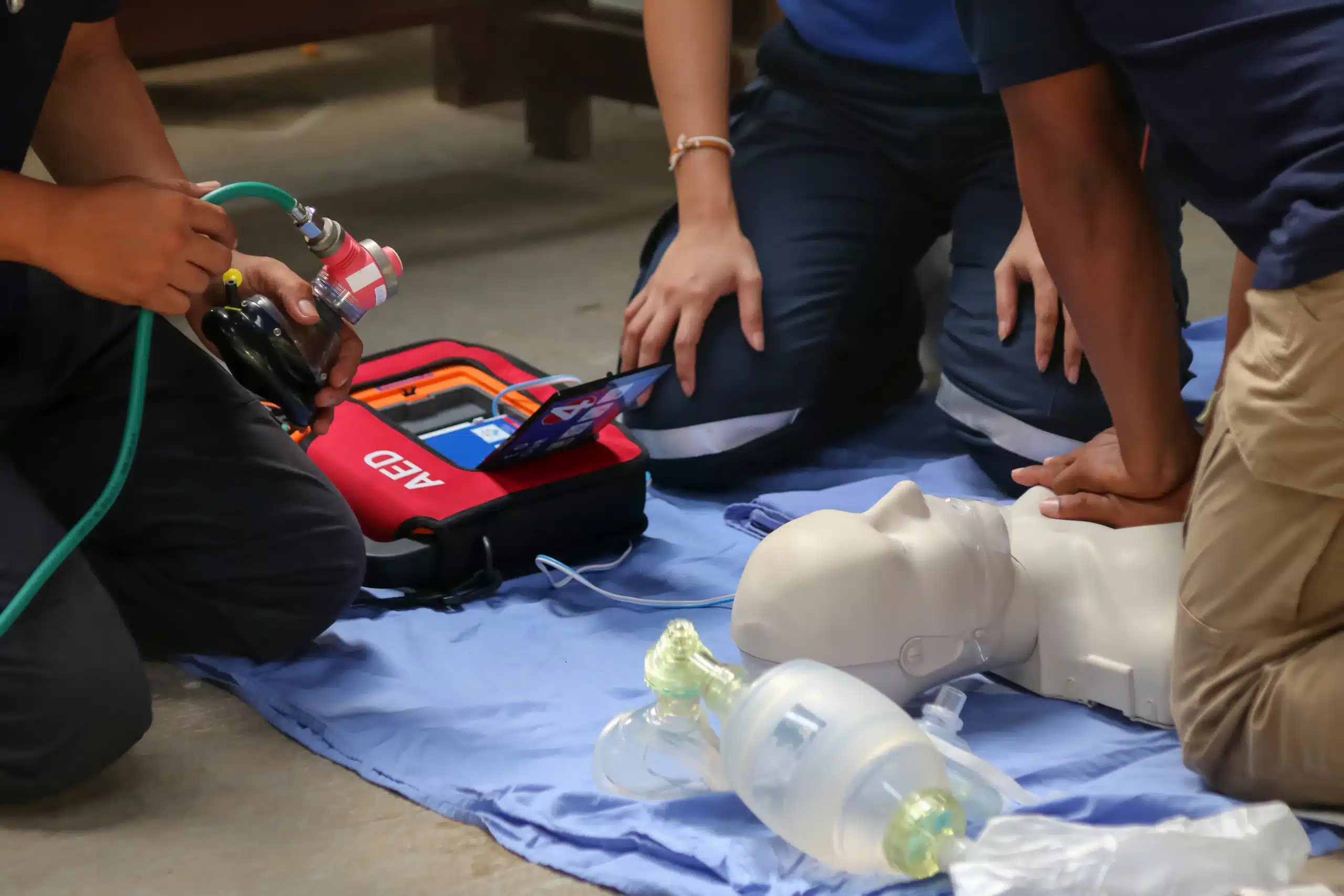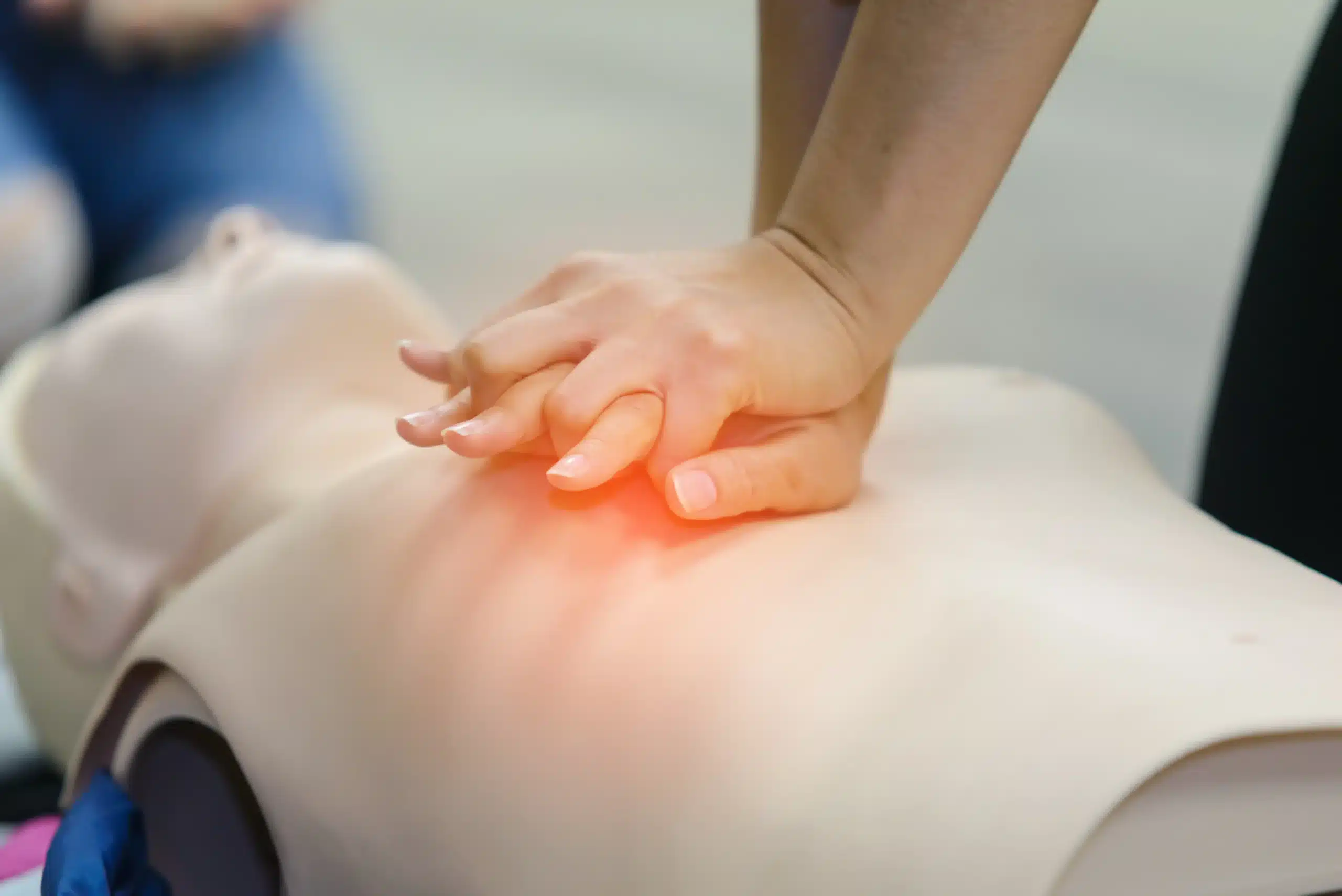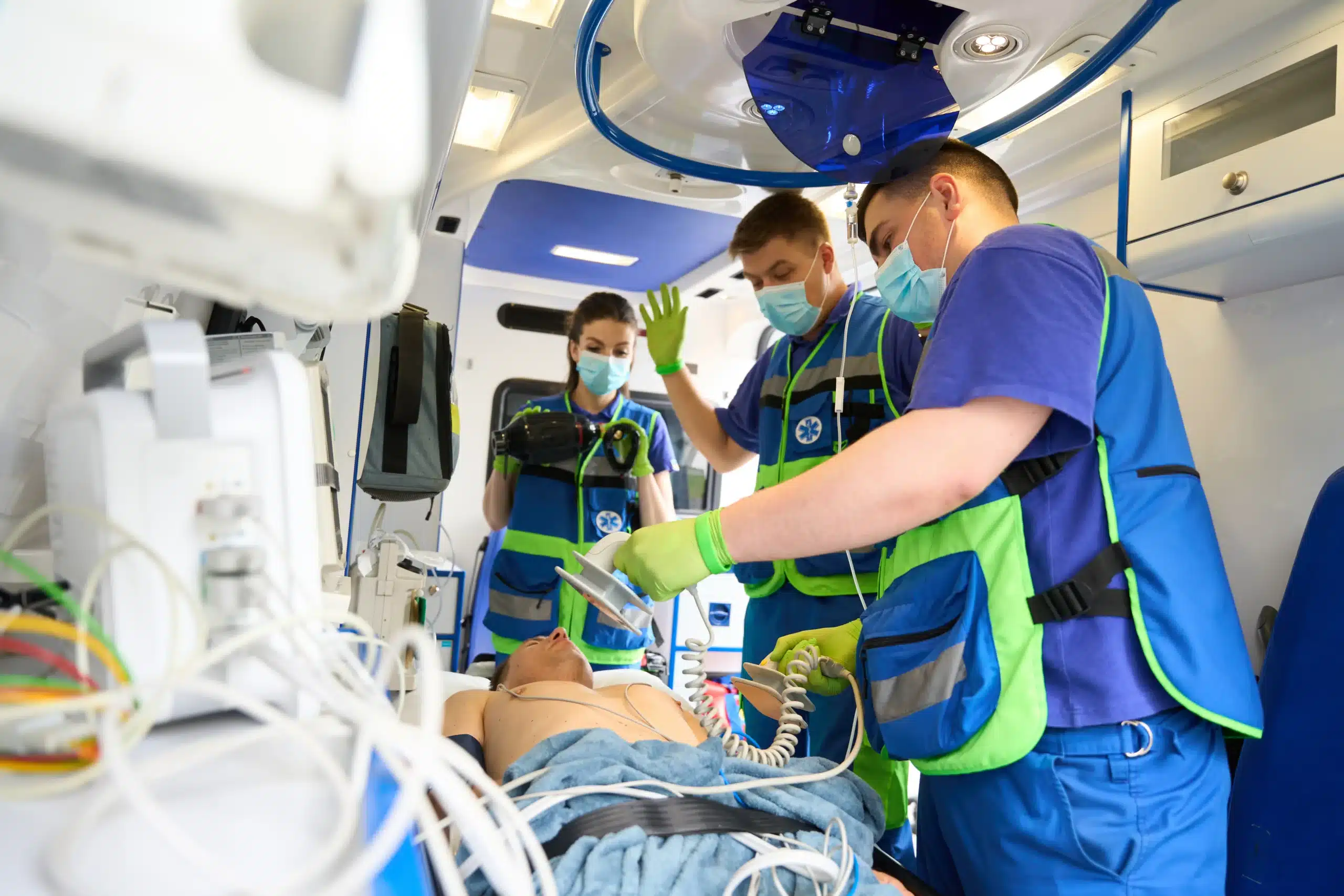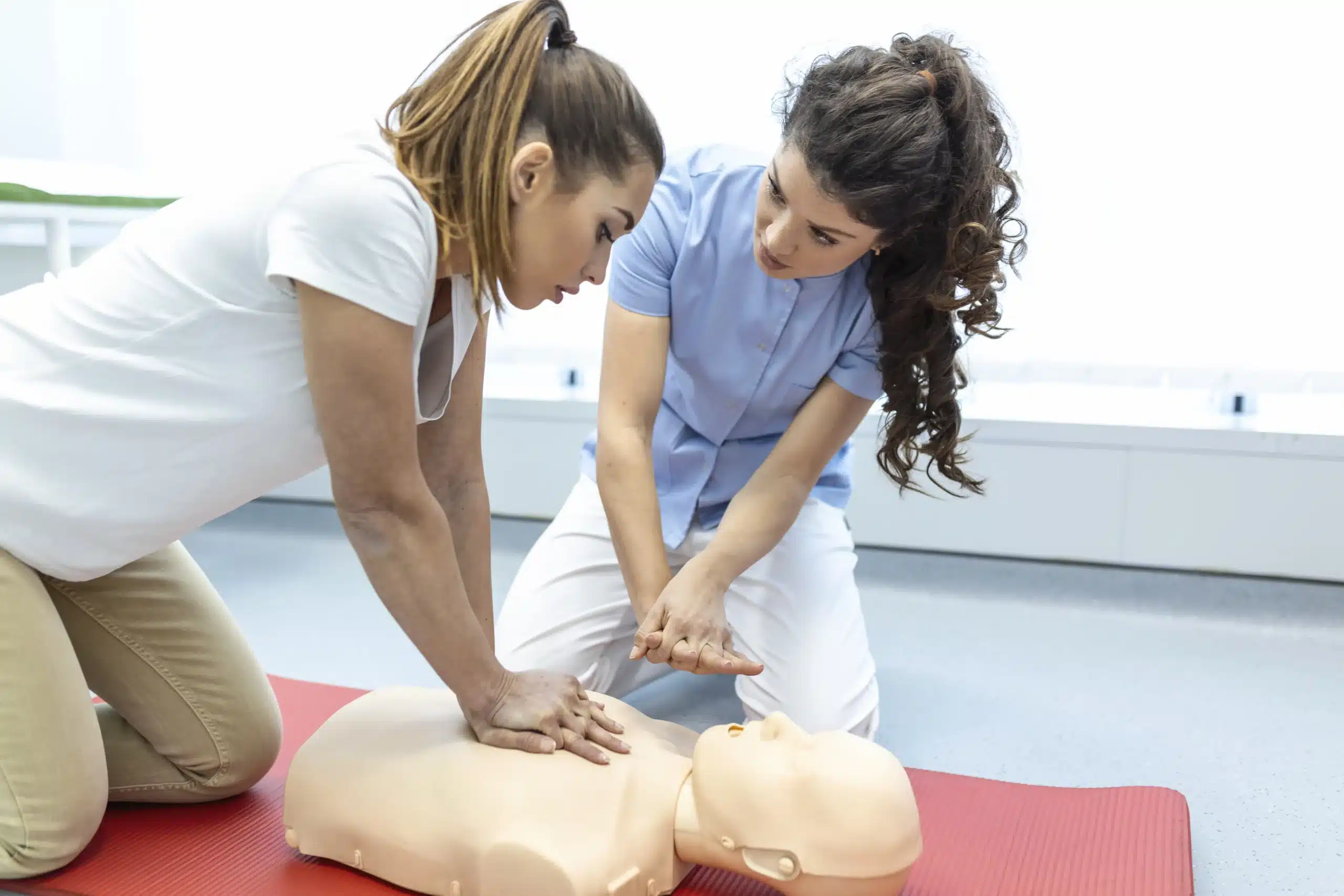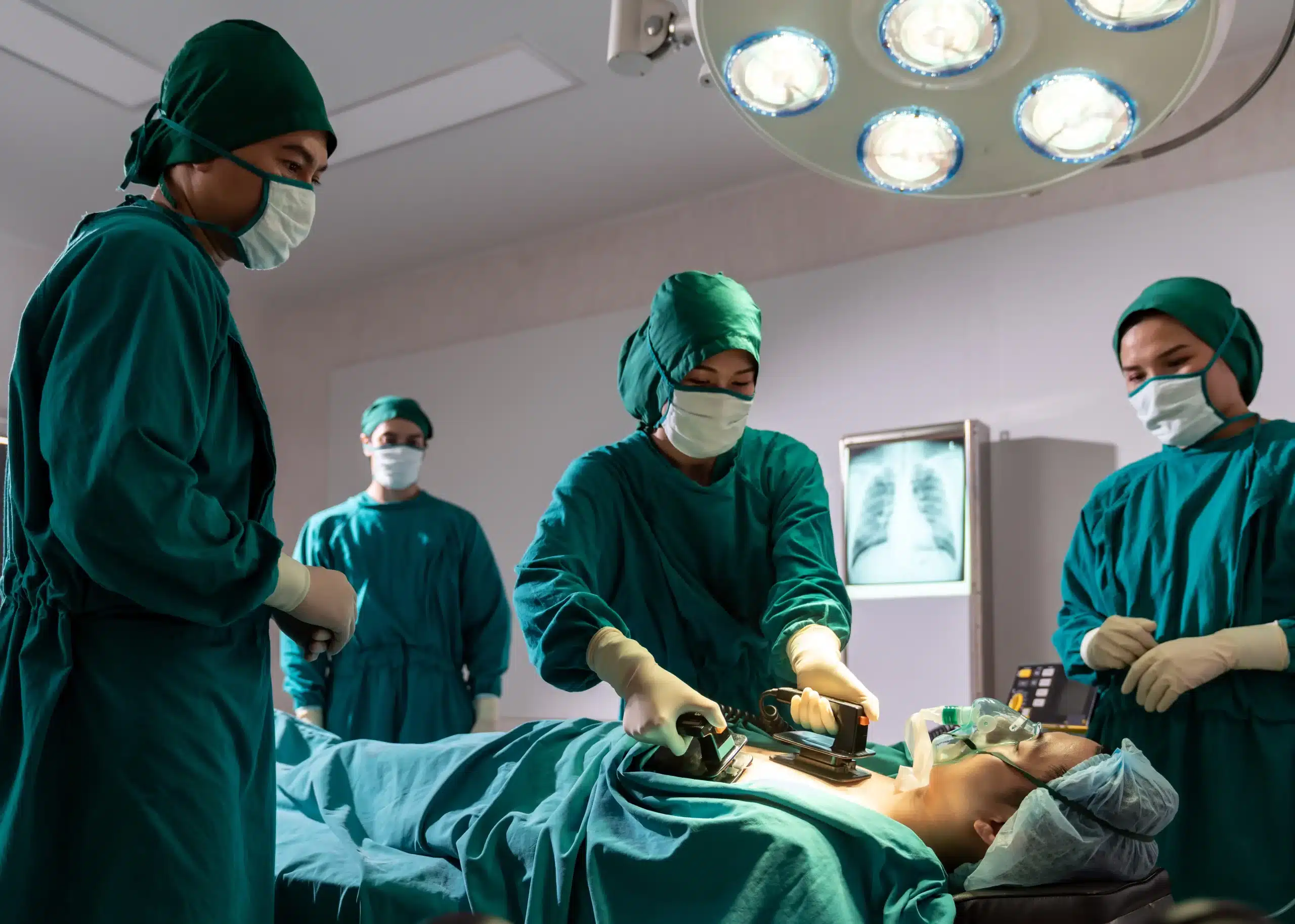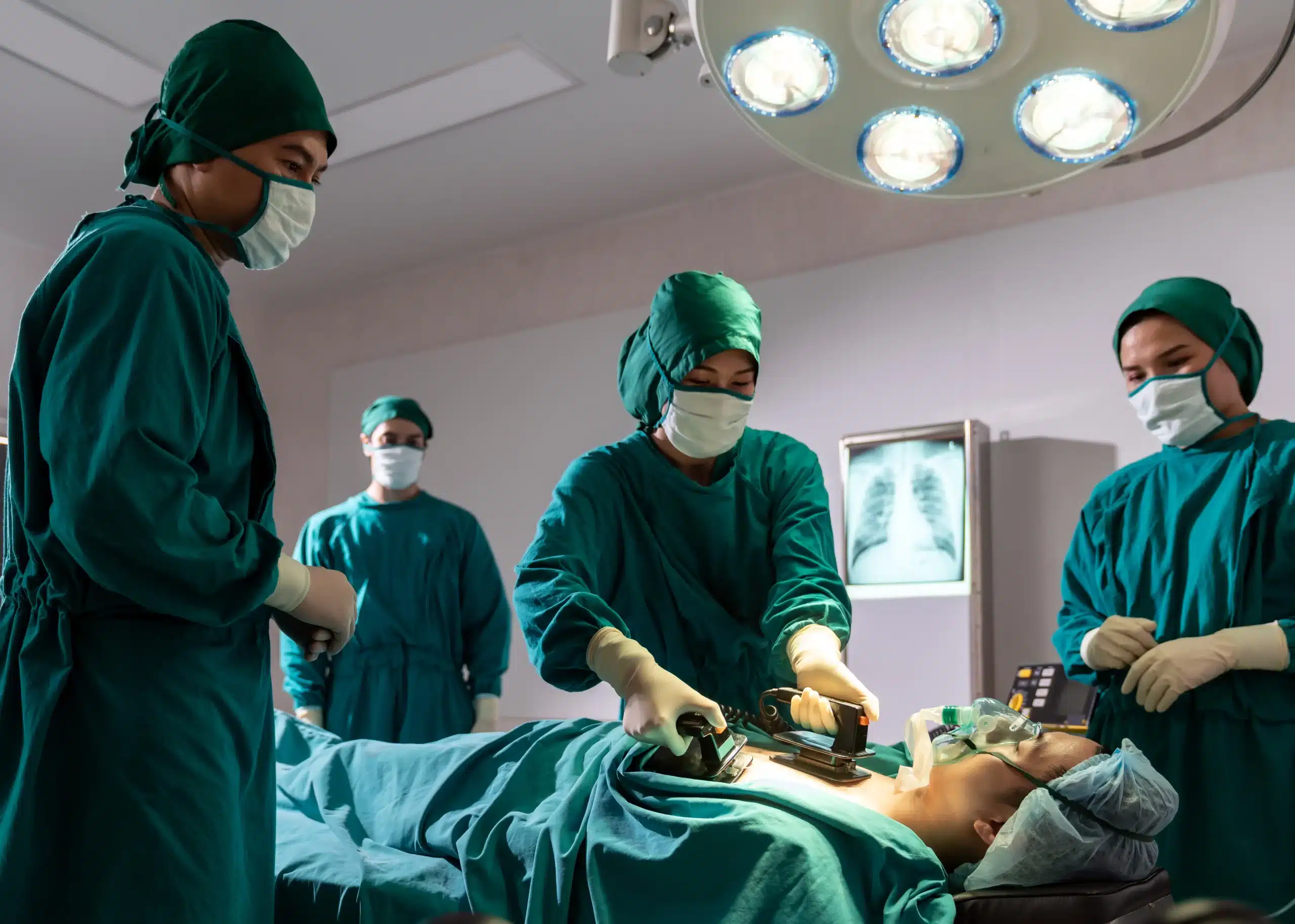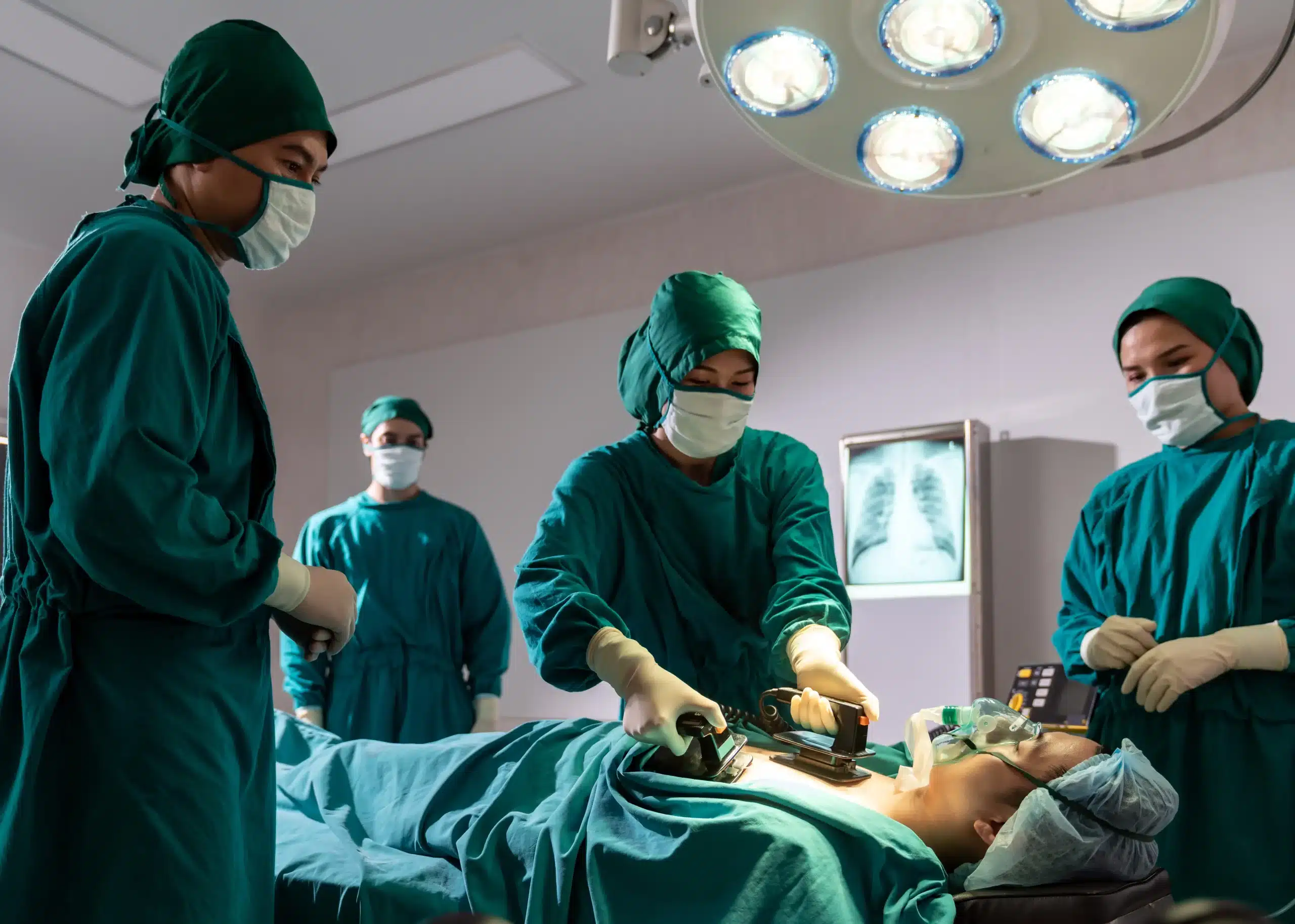Medical emergencies can happen anytime, anywhere. Are you ready to respond? Basic Life Support (BLS) training equips you with the skills to provide immediate care and potentially save a life. If you’re searching for “BLS classes near me,” this guide will provide you with all the information you need to get started. We’ll cover the essential skills taught in BLS classes, the different certification options available, and how to choose a reputable training provider. We’ll also discuss the benefits of different learning formats, such as in-person, online, and blended learning, to help you find the best fit for your needs.
Key Takeaways
- BLS certification empowers you to act in emergencies: You’ll gain practical skills like CPR, AED use, and airway management techniques, preparing you to respond effectively to various medical situations.
- Choosing the right course is key: Consider factors like accreditation (AHA is often preferred), instructor experience, class format (in-person, blended, or online), and cost to find the best fit for your needs and learning style. Local options like San Rafael CPR Classes offer convenient scheduling and a low price guarantee.
- Preparation maximizes your learning: Review course materials in advance, dress comfortably for hands-on practice, and select a course format that suits you best. While online resources are helpful, remember that in-person skills assessment is a required component of BLS certification.
What are BLS Classes & Why are They Important?
Knowing what to do in a medical emergency can make all the difference. Basic Life Support (BLS) classes equip you with the skills to respond effectively and potentially save a life. Let’s break down what BLS training involves and who can benefit.
What is BLS Training?
BLS certification covers core life-saving techniques. These include CPR (cardiopulmonary resuscitation), using an AED (automated external defibrillator), and relieving airway obstructions. BLS training isn’t just about memorizing steps; it’s about understanding how to assess a situation and react quickly. The training covers procedures for adults, children, and infants, often using realistic scenarios to help you practice your critical thinking skills. This prepares you to handle real-world emergencies. For more information on BLS, check out our BLS course page.
Who Needs BLS Certification?
While anyone can benefit from BLS training, it’s especially important for healthcare professionals like doctors, nurses, and EMTs. BLS certification provides these professionals with the advanced skills needed to manage cardiac arrest, respiratory distress, and other critical situations. It goes beyond basic CPR, adding techniques specifically designed for healthcare settings. Think of it as a crucial tool in their professional toolkit, enabling them to provide the highest level of care during emergencies. Beyond healthcare providers, many other professions, such as childcare providers, lifeguards, and coaches, also require or benefit from BLS certification. The Red Cross offers a helpful overview of who needs BLS training. If you’re considering a career in childcare, our EMSA Child Care Health & Safety course covers important first aid and safety procedures.
Find BLS Classes Near You
Finding the right BLS class shouldn’t feel like searching for a needle in a haystack. Here’s how to find BLS classes near you:
Use Online Search Tools & Directories
Start by using online search tools. A quick Google search for “BLS classes near me” often yields several results. You can also use specialized directories like the American Red Cross training site, which lets you filter by location and class format. This helps you narrow down your options quickly.
Check Local Healthcare Facilities & Training Centers
Many hospitals, community colleges, and dedicated training centers offer BLS certification courses. Reach out to these facilities directly or check their websites for class schedules and registration information. For example, local branches of the American Red Cross frequently offer BLS training.
Explore San Rafael CPR Classes
For those in the San Rafael, Corte Madera, and Fairfax, CA area, San Rafael CPR Classes offers a range of BLS certification courses. We pride ourselves on providing high-quality training at competitive prices. Check out our low price guarantee. We also offer an RQI program designed for busy medical professionals seeking a fast and efficient way to renew their certifications. For CPR resources in Northern California, take a look at our directory.
Choose the Right BLS Class Format
Choosing the right BLS class format depends on your learning style, schedule, and preferences. Let’s explore the pros and cons of in-person, online, and blended learning options to help you make the best decision.
Benefits of In-Person Training
In-person BLS training offers a highly interactive learning experience. You’ll work directly with a certified instructor and fellow students, allowing for real-time feedback and clarification. This format excels in developing teamwork and critical thinking skills, crucial for effective emergency response. The hands-on practice component ensures you gain confidence in performing life-saving techniques like CPR and using an AED. For many, the structured environment of a classroom setting promotes better focus and engagement. If you thrive in a collaborative learning environment and value direct interaction, in-person training might be the best fit. For more information, check out the Red Cross BLS page.
Flexibility of Online Courses
Online BLS courses offer unparalleled flexibility, allowing you to learn at your own pace and on your own schedule. This format is ideal for those with busy schedules or limited access to in-person classes. You can study anytime, anywhere, and revisit materials as needed. However, it’s important to be aware that online-only courses may not fulfill all workplace requirements or professional licensing standards. While many find online learning user-friendly, some encounter technical difficulties or struggle with the digital format. Be sure to choose a reputable provider with a high-quality online platform and ensure the course meets your specific certification needs. The Red Cross offers a variety of online BLS courses you can explore. For additional insights from experienced nurses, visit this online forum.
Advantages of Blended Learning
Blended learning combines the flexibility of online learning with the practical application of in-person skills sessions. You’ll complete the coursework online at your own pace, then attend a hands-on session to practice your skills and receive personalized feedback from an instructor. This format offers a comprehensive learning experience, ensuring you grasp both the theoretical knowledge and practical application of BLS techniques. The Red Cross provides blended learning programs that effectively combine online coursework with essential hands-on training. If you appreciate the convenience of online learning but also value the benefits of in-person instruction, blended learning could be the perfect solution.
What Happens in a BLS Class?
So, you’ve signed up for a BLS class—great! Now, you’re probably wondering what to expect. BLS classes follow a structured approach to equip you with the skills to respond confidently in medical emergencies. Let’s break down the key components:
Course Content & Essential Skills
BLS courses cover core life-saving techniques. You’ll learn adult, child, and infant CPR, how to use an AED (automated external defibrillator), and how to relieve airway obstructions. The curriculum often uses real-world scenarios to help you develop critical thinking skills and adapt your responses under pressure. These essential BLS skills form the foundation of effective emergency care.
Class Duration & Typical Formats
BLS classes are designed to be efficient and manageable, typically lasting around three hours. You’ll find several training formats to fit your schedule: traditional in-person classes, online learning, and blended learning (a mix of online and in-person sessions). The American Red Cross offers a blended learning program that combines online coursework with in-person skills sessions.
Hands-on Practice & Assessment
BLS classes aren’t just about lectures and videos. Hands-on practice is a crucial part of mastering these skills. You’ll work with mannequins and training AEDs to simulate real emergencies. This practical experience builds your muscle memory and confidence. Expect a skills assessment to ensure you’ve grasped the techniques and can perform them correctly. This combination of classroom learning and hands-on practice prepares you to respond effectively in a real emergency.
Choose a Reputable BLS Provider
Finding the right BLS provider is crucial for a valuable learning experience. Here’s what to consider:
Accreditation & Certification Standards
First, confirm the courses are accredited by a recognized organization like the American Heart Association (AHA). AHA-approved BLS training is often a job requirement in healthcare, so verify this on the course description. This accreditation validates the training quality and ensures your certification is widely accepted.
Instructor Qualifications & Experience
Experienced, certified instructors enrich the learning experience. Look for instructors with real-world healthcare or emergency response backgrounds. Their expertise strengthens the training and provides practical insights. San Rafael CPR Classes instructors bring years of experience to the classroom, equipping students with real-world scenarios and expert guidance.
Class Size & Equipment Quality
Hands-on, in-person training is essential for developing the muscle memory needed for effective CPR. Online-only courses don’t offer sufficient hands-on practice. Smaller class sizes allow for more personalized instruction and better access to training equipment. San Rafael CPR Classes prioritizes this hands-on approach to ensure you get the practice you need.
Location & Scheduling
Finally, consider class location and schedule. San Rafael CPR Classes offers convenient locations serving San Rafael, Corte Madera, and Fairfax, CA, with flexible scheduling to accommodate busy lives. Our Northern California CPR directory offers additional options throughout the region. Finding a provider with convenient options makes getting certified much easier.
BLS Class Costs & Options
Average Prices & Factors Affecting Cost
Basic Life Support (BLS) certification costs vary depending on several factors. Things like the training provider, location, and whether you choose an online or in-person format all play a role. Generally, you can expect BLS certification to cost anywhere from $30 to $150 per person. Online BLS courses are sometimes cheaper than in-person training, but think about which format best suits your learning style and needs. A positive learning experience can significantly impact how much you get out of the course. For more information about BLS costs, take a look at this resource.
Discounts & Group Rates
If you’re coordinating training for a group, look for providers that offer discounts for group registrations. This can be a great way to save money when training multiple employees or colleagues. Some training centers also offer special rates for students and healthcare professionals, so it’s always worth asking about potential discounts. For insights into BLS recertification costs, read this article.
San Rafael CPR Classes’ Low Price Guarantee
We’re committed to providing high-quality BLS training at a price you can afford. That’s why we offer a low price guarantee. If you find a comparable BLS course at a lower price, we’ll match it. Learn more about our low price guarantee. With San Rafael CPR Classes, you can get the training you need without overspending.
Get BLS Certified
Okay, so you’re ready to get your BLS certification—awesome! This section will walk you through the process.
Steps to Certification
Getting BLS certified is straightforward. You’ll need to find a reputable training provider like the American Red Cross or the American Heart Association. They offer various course formats, including in-person, online, and blended learning (a mix of both). San Rafael CPR Classes also offers the American Heart Association BLS course. No matter which format you choose, the course will cover essential life-saving skills like CPR, using an AED, and relieving choking. You’ll learn in a classroom setting and get hands-on practice. Once you successfully complete the course, you’ll receive your BLS certification.
Certification Validity & Recertification
Your BLS certification is typically valid for two years. To maintain your skills and stay up-to-date on the latest guidelines, you’ll need to recertify before it expires. The American Red Cross and other organizations offer recertification courses, often available in the same formats as the initial certification course. It’s a good idea to start thinking about recertification about six months before your current certification expires. Check with your certifying organization about their specific recertification process and any deadlines. Staying current is key to providing effective care in emergencies.
Prepare for Your BLS Class
So, you’ve decided to get BLS certified—fantastic! Now, let’s make sure you’re totally prepared for your class. A little prep work goes a long way.
Prerequisites & Study Materials
Good news: there aren’t usually any prerequisites for a BLS class. Whether you’re a seasoned healthcare professional needing recertification or brand new to the field, you’re welcome. BLS certification covers advanced life support techniques, including AED use, airway management, and other resuscitation skills for healthcare providers. Some courses suggest reviewing basic CPR beforehand, but it’s not usually required. Organizations like the American Red Cross offer BLS training, so check their websites for specific details.
Most BLS classes provide the necessary study materials, often including a student manual and online resources. Familiarize yourself with the materials before class. Even a quick skim can boost your confidence.
What to Bring & How to Get Ready
BLS classes blend classroom learning and hands-on practice. Wear comfortable clothing that allows free movement—you’ll be practicing techniques on mannequins and working with other students. The class will provide any necessary medical equipment. A notebook and pen can be helpful for notes, but many courses offer digital resources, too.
Before your class, consider your learning style. Some providers, like the Red Cross, offer different learning formats, including in-person, online, and blended learning. Choosing the right format helps you absorb the information effectively. If you thrive in a hands-on environment, in-person training might suit you best. If you prefer flexibility, a blended learning approach (combining online coursework with in-person skills sessions) could be a great fit. Check out our RQI classes for a fast and efficient certification route. Finally, double-check the class location and time. Being prepared and punctual will help you relax and learn.
Top BLS Class Providers
Finding the right BLS class provider is crucial for receiving high-quality training and a recognized certification. Here’s a rundown of some leading options:
American Heart Association
The American Heart Association (AHA) sets the gold standard for BLS certification. Many employers, including hospitals and clinics, prefer or require AHA-approved certifications to ensure their staff is trained to the highest standards. The AHA provides comprehensive resources and updates its guidelines regularly to reflect the latest advancements in resuscitation science. You can find AHA-certified BLS courses through various training centers.
American Red Cross
The American Red Cross is another well-respected provider of BLS training and certification. They offer various course formats, including online, in-person, and blended learning options. The Red Cross emphasizes a practical, scenario-based approach to improve the real-world application of skills. Check the American Red Cross website to explore their BLS programs.
National Safety Council
The National Safety Council also offers BLS certification courses. These courses equip people with the skills to respond to emergencies effectively. They focus on best practices for BLS training and cover essential life-saving techniques. Learn more about their programs on the National Safety Council website.
San Rafael CPR Classes
San Rafael CPR Classes offers AHA-certified BLS CPR and AED classes. They emphasize personalized training and often provide same-day certification. Serving San Rafael, Corte Madera, and Fairfax, CA, they focus on making high-quality training accessible and convenient. Explore their BLS course offerings or check their low price guarantee.
Local Hospitals & Medical Centers
Many local hospitals and medical centers offer BLS training, often as part of their employee training programs. This ensures their staff is prepared to respond to medical emergencies within their facilities. Contact your local hospitals or medical centers directly to inquire about BLS training availability. You might find a directory of CPR classes in Northern California helpful.
Common BLS Class Misconceptions
It’s easy to get confused about BLS certification, especially with so much information online. Let’s clear up some common misconceptions.
Online-Only Certification Myth
One big myth is that you can get fully certified in BLS online. The truth is all BLS certifications from the American Heart Association (AHA) require an in-person skills assessment. While online learning is a great way to study the material at your own pace, you’ll still need to demonstrate your skills in person. There’s no shortcut to hands-on training! This information from experienced nurses confirms the importance of the in-person component.
BLS vs. CPR
Many people also wonder about the difference between BLS and CPR. CPR (Cardiopulmonary Resuscitation) teaches the basics of chest compressions, rescue breaths, and using an AED. BLS (Basic Life Support) builds on those skills and is designed for healthcare providers like doctors, nurses, and EMTs. The American Red Cross explains that BLS covers more advanced techniques for airway management and other life-saving procedures. So, while CPR training is valuable for anyone, BLS certification is essential for certain professions.
Passing the Class
A lot of students worry about passing the BLS class. Honestly, the experience varies. Some people find the online portion straightforward, while others find the timed simulations a bit tricky. The key is to prepare and familiarize yourself with the material beforehand. According to this discussion, practice makes perfect, and the more comfortable you are with the content, the more confident you’ll feel during the skills assessment.
Sufficient Training
Finally, some believe online-only courses provide enough training. In reality, hands-on practice is crucial for developing the muscle memory you need in an emergency. Online courses are a helpful tool, but they can’t replace the experience of performing CPR and using an AED on a manikin. This article emphasizes that in-person training is essential for building the confidence and skills to respond effectively in a real-life situation.
Related Articles
- BLS Courses in Corte Madera: Your Certification Guide – San Rafael CPR Classes
- BLS Certification in Fairfax: The Complete Guide – San Rafael CPR Classes
- BLS Classes in San Rafael: Your Guide – San Rafael CPR Classes
- BLS Classes in Fairfax: Your Complete Guide – San Rafael CPR Classes
- BLS Certification in Fairfax: Your Comprehensive Guide – San Rafael CPR Classes
Frequently Asked Questions
What’s the main difference between CPR and BLS? CPR focuses on the core techniques of chest compressions, rescue breaths, and AED use. BLS builds upon these fundamentals, incorporating more advanced airway management and other life-saving procedures typically required for healthcare providers. Think of BLS as a more comprehensive approach to life support.
Is online-only BLS certification sufficient? No, online-only training won’t fully satisfy the requirements for BLS certification. While online courses offer a convenient way to learn the material, all accredited BLS certifications require an in-person skills assessment. This practical component is essential for demonstrating your ability to perform life-saving techniques correctly.
How long does it take to get BLS certified? BLS courses are designed to be efficient, often completed in a single day. The duration can vary slightly depending on the course format and provider, but most classes last around 4-6 hours, including both classroom instruction and hands-on practice.
How much does a BLS class typically cost? The cost of BLS certification varies based on factors like location, training provider, and course format (online, in-person, or blended). Expect to pay between $75 and $150. It’s always a good idea to compare prices and check for any available discounts, especially for group registrations or students.
How do I find a reputable BLS class near me? Start by searching online for “BLS classes near me.” You can also check with local hospitals, community colleges, and dedicated training centers. Look for providers accredited by recognized organizations like the American Heart Association or the American Red Cross to ensure a high-quality training experience and a widely accepted certification.
